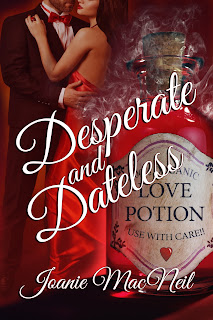Yes, you read that right.
My dad called me February 13 to wish me and early Happy Halloween.
We both had a good laugh. Nearly twenty-five years ago, my dad underwent brain surgery to help control his epileptic seizures. While he hasn't had seizures since, he has had to relearn a lot of things he'd forgotten after doctors removed a quarter-sized piece of his brain. He's had a long journey.
I've always taken for granted the ability to read, to write, to think in the way I always have. I knew the things my dad had to re-learn. How to talk, how to write, how to name the every day objects we all "just know" because we've learned from the time we were little. In the blink of a ten hour surgery, my dad forgot a lot of those things. The names of his wife, his kids, his pets, even the names of holidays all these years later. His brain just didn't make the connection any more.
As writers, we all learn new things with every book we write. We forge new pathways in our brains and test our own memories as well as our sanity. I've learned some new things and had new experiences mostly out of my own interest which I've then transformed into new story ideas.
When I moved to a small town, I began to explore and use the scenery around me to create a mystery series about Katie Mullins who moved to a small town to hide out and ended up creating a whole new life. While I didn't get to work in a bookstore, I sure do haunt a lot of them!
As a karate student, I began to write a martial arts mystery series and my latest work in progress, is about a woman who ends up running a tea shop. All the things I write about in that book, I've partly learned in my brief stint working in a local Tim Hortons coffee shop. Now that I'm working at a haunted theatre... The sky is the limit. The things I learn go into books and the things I write become things I want to learn. It's all give and take.
As for my dad, even after the surgery and a lengthy recovery, he's now a singer/songwriter.
He used to be a lumberjack.
To be honest, we didn't always get along. We went for a long time gone without speaking to each other. Once we reconnected, I've been fortunate to work with him writing lyrics and have heard my words come to life on his numerous CDs.
As for Halloween in February, I figure next year I'll send him a package of pumpkin seeds for Valentine's Day next year.
Diane Bator
My dad called me February 13 to wish me and early Happy Halloween.
We both had a good laugh. Nearly twenty-five years ago, my dad underwent brain surgery to help control his epileptic seizures. While he hasn't had seizures since, he has had to relearn a lot of things he'd forgotten after doctors removed a quarter-sized piece of his brain. He's had a long journey.
I've always taken for granted the ability to read, to write, to think in the way I always have. I knew the things my dad had to re-learn. How to talk, how to write, how to name the every day objects we all "just know" because we've learned from the time we were little. In the blink of a ten hour surgery, my dad forgot a lot of those things. The names of his wife, his kids, his pets, even the names of holidays all these years later. His brain just didn't make the connection any more.
As writers, we all learn new things with every book we write. We forge new pathways in our brains and test our own memories as well as our sanity. I've learned some new things and had new experiences mostly out of my own interest which I've then transformed into new story ideas.
When I moved to a small town, I began to explore and use the scenery around me to create a mystery series about Katie Mullins who moved to a small town to hide out and ended up creating a whole new life. While I didn't get to work in a bookstore, I sure do haunt a lot of them!
As a karate student, I began to write a martial arts mystery series and my latest work in progress, is about a woman who ends up running a tea shop. All the things I write about in that book, I've partly learned in my brief stint working in a local Tim Hortons coffee shop. Now that I'm working at a haunted theatre... The sky is the limit. The things I learn go into books and the things I write become things I want to learn. It's all give and take.
As for my dad, even after the surgery and a lengthy recovery, he's now a singer/songwriter.
He used to be a lumberjack.
 |
| At a local coffee house with my dad and one of our CDs. |
As for Halloween in February, I figure next year I'll send him a package of pumpkin seeds for Valentine's Day next year.
Diane Bator
 |
Check out my books here. |











.jpg)

.jpg)




